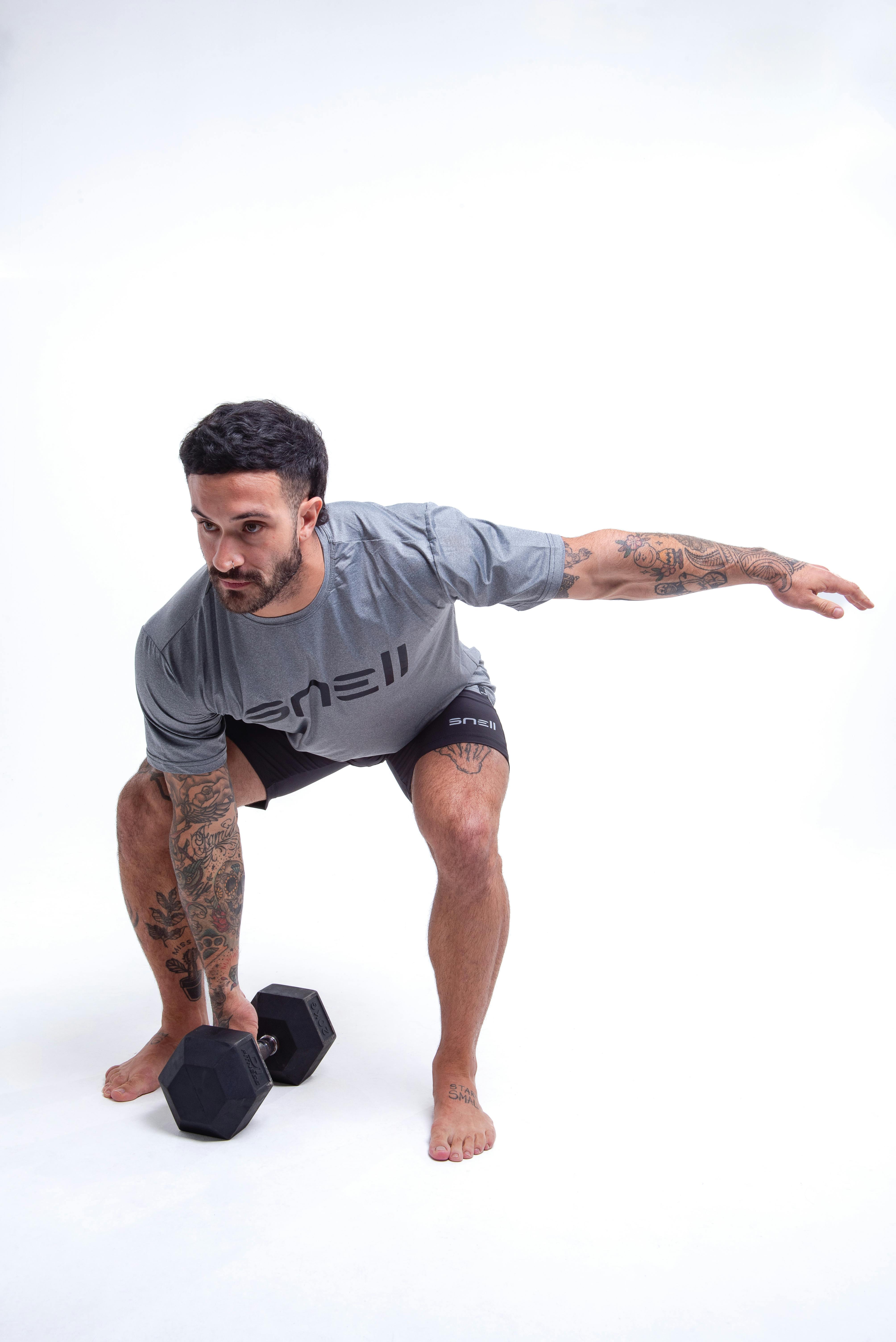Effective Ways to Master Kurzhantel Brust Stehend for Better Chest Development in 2025
In the rapidly evolving world of fitness, mastering the Kurzhantel Brust Stehend (dumbbell chest press standing) has become a vital skill for anyone looking to enhance their chest development. This exercise not only targets the Brustmuskulatur (chest muscles) but also engages the core, improving overall stability and balance.
Understanding the significance of body mechanics in workouts, individuals can achieve effective Muskelaufbau (muscle building) and improve their performance in various sports. The importance of using Fitnessgeräte (fitness equipment) correctly cannot be overstated, as improper form can lead to injury and inefficiency. This article will explore essential techniques, variations, and training routines that will elevate your chest training to the next level.
By the end of this guide, you will have insights into how to optimize your training regimen, adjust intensity levels, and maintain proper posture during Krafttraining (strength training). Whether you’re a beginner or seasoned athlete, the following tips are designed to help you develop a stronger, more defined chest while promoting overall health and fitness.
Essential Techniques for Proper Form
Building on these fundamentals, mastering the correct form during the Kurzhantel Brust Stehend exercise is crucial for achieving desired results.
Step-by-Step Process for Proper Execution
To effectively perform the Kurzhantel Brust Stehend, follow these steps:
- Begin by selecting the appropriate Hantel (dumbbell) weight that you can lift comfortably while maintaining proper form.
- Stand upright with your feet shoulder-width apart, holding a dumbbell in each hand at chest height.
- Engage your core for stability as you press the weights upward until your arms are fully extended.
- Slowly lower the weights back to the starting position, focusing on keeping control throughout the motion.
- Remember to breathe: exhale while pressing up and inhale while lowering.
Common Mistakes to Avoid
While performing this exercise, be mindful of common pitfalls, such as:
- Arched Back: Ensure your back remains straight to prevent injury.
- Too Heavy Weights: Start with lighter weights to master your form before progressing.
- Neglecting Core Engagement: Maintain core tension to support your lower back during the lift.
Significance of Core Stability
The Körperstabilität (core stability) gained from this exercise translates into improved performance in other workouts and daily activities. An engaged core stabilizes your body, allowing for safer lifting and more effective muscle engagement.
With these essential techniques established, let’s explore specific training routines that can maximize your chest development.
Customized Training Routines for Chest Development
This naturally leads us to the importance of a structured training plan that incorporates the Kurzhantel Brust Stehend for optimal results.
Weekly Training Schedule
Integrating the dumbbell chest press into your weekly workout routine can significantly enhance your Kraftsteigerung (strength improvement). Aim for:
- Day 1: Chest and Triceps combining the Kurzhantel Brust Stehend with tricep dips.
- Day 2: Back and Biceps focusing on complimentary exercises like rows.
- Day 3: Rest and recovery or perform mobility exercises.
- Day 4: Repeat the chest and triceps routine.
- Day 5: Full-body workout emphasizing core stability.
Incorporating Variations for Enhanced Results
To keep your training exciting and effective, incorporate variations such as:
- Alternate Dumbbell Press: Press one arm up at a time to engage stabilizing muscles.
- Decline Press: Adjust your body angle to target different areas of the chest.
- Single-Arm Press: Improves coordination and allows for unilateral strength development.
Tracking Progress for Continued Improvement
Utilizing a fitness journal or app can help track your Trainingsfortschritt (training progress). Regularly updating your weights lifted and reps performed not only motivates you but also helps identify patterns that lead to increased muscle mass and performance.
Having established effective training routines, understanding the role of nutrition plays a fundamental part in your fitness journey. Let’s delve deeper into sports nutrition essential for maximizing your fitness efforts.
Sports Nutrition and Its Impact on Muscle Growth
Having covered essential training elements, it’s crucial to acknowledge the supporting role of Sporternährung (sports nutrition) in achieving your fitness goals.
Key Nutrients for Muscle Building
Incorporate these vital nutrients into your diet for optimal results:
- Protein: Essential for muscle repair and growth; consider sources like chicken, fish, legumes, and protein supplements.
- Healthy Fats: Supports hormone production and overall health; include avocados, nuts, and olive oil.
- Complex Carbohydrates: Fuels workouts and aids in recovery; opt for whole grains, fruits, and vegetables.
Hydration: The Overlooked Component
Staying well-hydrated is critical for performance and recovery. Aim for at least 2-3 liters of water daily, and consider hydration strategies during intense workouts.
Meal Timing for Maximum Efficiency
Pay attention to meal timing, particularly surrounding your workouts. Consume a balanced meal containing protein and carbs 1-2 hours before exercising and refuel with a protein-rich snack post-workout to enhance recovery.
Once equipped with nutrition knowledge, let’s explore how to prevent injuries while performing the Kurzhantel Brust Stehend effectively.
Injury Prevention Techniques for Safe Workouts
<pConnected to this principle of safety, adopting injury prevention techniques ensures longevity in your fitness journey.
Warm-Up and Cool-Down Practices
Always start your workout with dynamic stretching or light cardio to warm up your muscles. Post-workout, engage in static stretching to aid recovery and improve flexibility.
Listening to Your Body
Be mindful of any discomfort or pain during exercises. Adjust weights, modify techniques, or take a break when necessary to prevent further injury.
The Importance of Proper Equipment
Investing in proper fitness gear, including appropriate footwear and quality Kraftgeräte (strength equipment), enhances safety and performance, allowing for effective Körpertraining (body training).
Now that you’re aware of injury prevention strategies, let’s address some common questions regarding the Kurzhantel Brust Stehend exercise.
Q&A Section
What is the ideal frequency for performing Kurzhantel Brust Stehend?
It’s recommended to include this exercise in your routine 1-2 times a week, allowing at least 48 hours of recovery between sessions for optimal muscle growth.
Can beginners perform this exercise?
Yes, beginners can execute the Kurzhantel Brust Stehend using lighter weights as they develop strength. Mastering form is critical before adding intensity.
How can I modify this exercise for better results?
Incorporating variations such as incline or decline exercises can target different parts of the chest, promoting balanced muscle development. Additionally, try adjusting the weights to match your fitness level.
What should I do if I experience pain while training?
If you feel pain during exercise, stop immediately and assess your form. If pain persists, consult a professional or consider seeing a physical therapist to address the issue.
In conclusion, mastering the Kurzhantel Brust Stehend is integral to achieving your fitness goals in 2025. Through proper techniques, structured routines, nutrition, and safety protocols, you’ll set yourself up for success. With consistent practice and dedication, expect improvements in strength, body composition, and overall well-being.


For further reading on optimizing your fitness journey, check out this insightful article and explore different training methods for better results.
